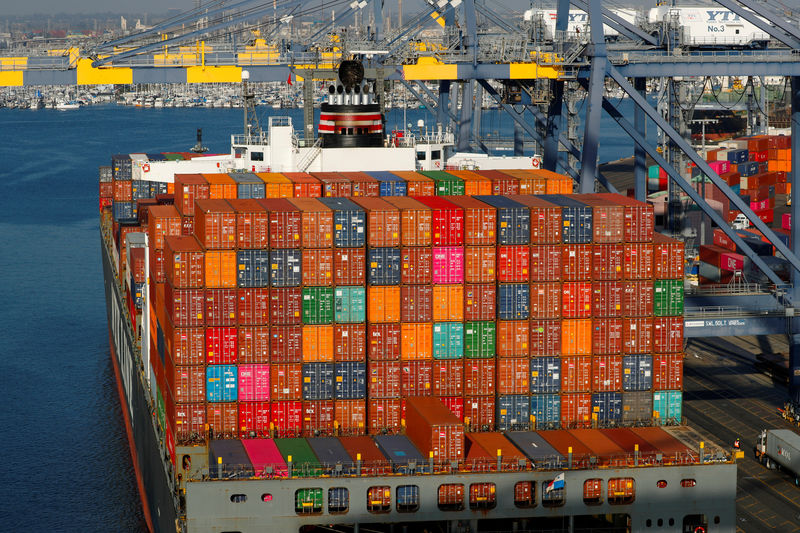WASHINGTON, (Reuters) - - The U.S. trade deficit dropped more than expected in January likely as China boosted purchases of soybeans, leading to a rebound in exports after three straight monthly declines.
The Commerce Department said on Wednesday the trade deficit declined 14.6 percent, the largest decline since March 2018, to $51.1 billion also as softening domestic demand and lower oil prices curbed the import bill.
Data for December was revised slightly down to show the trade gap widening to $59.9 billion instead of the previously reported $59.8 billion. Economists polled by Reuters had forecast the trade gap narrowing to $57.0 billion in January.
The trade deficit remains elevated despite President Donald Trump's "America First" policies, which have left the United States mired in a bruising trade war with China and provoked retaliatory tariffs from other trading partners.
Washington last year imposed tariffs on $250 billion worth of goods imported from China, with Beijing hitting back with duties on $110 billion worth of American products, including soybeans and other commodities.
Trump has delayed tariffs on $200 billion worth of Chinese imports as negotiations to resolve the eight-month trade war continue, with Beijing pledging to resume bulk purchases of soybeans after cancellations at the height of the trade fight.
U.S. Trade Representative Robert Lighthizer and Treasury Secretary Steven Mnuchin are in China this week for another round of talks with Chinese Vice Premier Liu He.
The politically sensitive trade deficit with China fell 6.4 percent to $34.5 billion in January.
When adjusted for inflation, the goods trade deficit decreased $7.8 billion to $83.8 billion in January. The drop in the so-called real goods trade deficit could see economists bump up their very low first-quarter gross domestic product growth estimates.
Retail sales, manufacturing and homebuilding data have suggested the economy lost considerable momentum early in the first quarter. The Atlanta Federal Reserve is forecasting GDP rising at a 1.3 percent annualized rate in the January-March quarter. The government reported last month that the economy grew at a 2.6 percent pace in the fourth quarter.
But that estimate is likely to be lowered when the government publishes a revision on Thursday as some economic data for December was weaker than had been previously assumed.
The trade deficit in January was pushed down by a 0.9 percent increase in exports to $207.3 billion. Soybean exports rose by $0.9 billion in January.
Exports of motor vehicles and parts increased by $1.2 billion, but shipments of capital goods decreased by $0.8 billion, led by a $1.3 billion decline in civilian aircraft.
Export growth, however, continues to be constrained by slowing global demand and the dollar's strength last year, which is making U.S.-made goods less competitive on foreign markets. Despite the rise in soybean shipments, exports to China were the smallest since September 2010.
In January, imports fell 2.6 percent to $258.5 billion, the lowest level since last June. Imports previously had surged, likely as businesses stocked up in anticipation of further duties on Chinese imports.
Capital goods imports dropped by $3.0 billion in January, led by a $0.9 billion decline in imports of computer accessories. There were also decreases in imports of semiconductors and civilian aircraft.

Crude oil imports dropped by $1.4 billion, partly reflecting lower prices. Imported oil prices averaged $42.59 per barrel in January, the cheapest since December 2016.